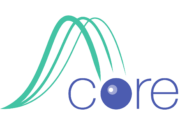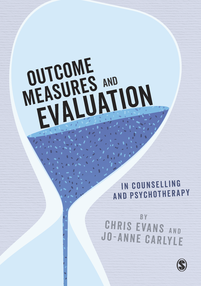Since the first of January (2015) anyone can put any CORE measure into software under the terms of the Creative Commons Attribution-NonCommercial-NoDerivatives 4.0 International licence. Previously, we had restricted this permission just to people using the measure in software just for a research project and otherwise only to CORE Information Management Systems (CORE IMS) and people sublicensing through them. See our joint statement for more information.
The Creative Commons licence puts two restrictions on anyone putting the measures in software: they must acknowledge the origins of the measure and they mustn’t change the measures. This is in line with the situation for paper reproduction of the measures which has always been on these “copyleft” terms. However, both the acknowledgement and the “no changes” were easy for reproduction on paper: just print out the PDF and the acknowledgement is there in the copyright statement at the foot of every page and any printing to any sensible printer from PDF guaranteed no meaningful changes.
The situation is not so clear when a measure is put into software and we’re gaining experience, and remembering some of the early learning we did with CIMS some years back.
Acknowledgement is fairly easy: if notifications@support.mozilla.orgthe line “Copyright to CST: https://www.coresystemtrust.org.uk/copyright.pdf” that is in the PDF versions is there, and if ideally the link is clickable and opens to that URL, then you have done the minimum we ask by way of acknowledgement.
No changes is a bit more complicated as obviously the formatting is pretty well bound to change depending on the device on which the text appears. Where the intention is for end users (patients, clients, service users, research or survey participants) to use the measure in the software the following must be true:
- The introduction (“IMPORTANT – PLEASE READ THIS FIRST This form has 34 statements about …” should be unchanged in content but the line “Please use a dark pen (not pencil) and tick clearly within the boxes.” can be replaced with whatever is sensible to tell the user how to fill in the items.
- The time frame (“Over the last week”) must come before the items and at the head of each block of items. If the items are presented oen at a time, this must be there with each item. We recommend if the items are presented sequentially that the system offer an option to see the introductory instructions (#1 above) with every page.
- The response anchors (“Not at all” to “Most or all the time”) must be unchanged and against each response option.
- Clearly the “Please turn over” instruction from the CORE-OM can be dropped but something similar should be used to try to ensure that people do page through all the items.
- The system does not have to calculate the overall score and present it to the end user. If it does, it must do so correctly, see #6.
- Scoring is simple and the “clinical scoring” of 10x the the mean item score is used for all measures. Perhaps counterintuitively the “well being” domain score is scored in the same direction as the other domains, i.e. higher scores indicate lower well being. Prorating can be applied for any score provided that fewer than 10% of the items on the score have been omitted. Clearly for scores with fewer than ten items this means that no prorating of missing items is supported, apply using rounding to the 10% so up to three items can be omitted from the 28 item non-risk score [clarification added 17/4/23]. It is the responsibility of whoever is putting the measure into software to ensure that the right items are mapped to the right scores, that “positively cued” items (e.g. “I have been happy with the things I have done” have their scores included correctly (i.e. scoring 4,3,2,1,0 rather than 0,1,2,3,4 for the “problem cued” items) and that scoring is correct.
- We are happy to review any implementation with you if we have time for this. Currently, if this is not particularly urgent, we do not charge for this but we may have to change that if the work load becomes significant.
- We could provide sample data to be entered for all the measures that could be used to check scoring and can help with that but that is a significant piece of work for which we would have to charge and sample data are under development currently. The responsibilty will still remain with whoever programs the scoring.
This is all work in development and we will turn this into an FAQ as experience develops but experience so far has been that complying with the licence conditions and checking that is not onerous for the programmers/designers nor for us to check.
Do get in touch with us if you would like us to work with you on this or if you are confident you have done it fine and just want us to know you are making the measures available with computer support.
Best wishes,
Chris Evans (for CST)

